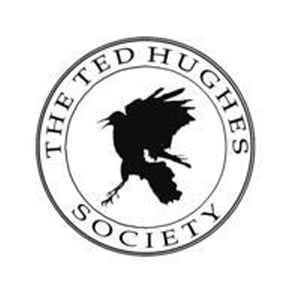Prose by Ted Hughes
The Iron Woman (London: Faber and Faber, 1993)
Lorraine Kerslake (University of Alicante) considers Hughes's sequel to The Iron Man.
Although it was published in 1993, Hughes had already begun writing The Iron Woman in the mid-1980s, at the same time as he was writing Shakespeare and the Goddess of Complete Being, which was finally completed and published in 1992.Although the two books apparently have little in common, Hughes’ children’s writing allowed him to write without the restraints of his adult’s writing and as Neil Roberts has suggested “Despite being made of iron, the Woman is perhaps Hughes’s most direct representation of the Goddess” (A Literary Life, 2006: 177). Whilst the healing quest in his adult work is essential but unrealizable, since redemption can never be obtained, The Iron Woman can be read as a mythical personification of the “Goddess”. In this sense she was for Hughes probably the most complete healing myth that he ever created, and enacts how the balance between nature and humankind, inner and outer worlds are finally achieved so that the reconciliation between culture and nature can take place.
Written as a sequel to The Iron Man, The Iron Woman has a much stronger and active environmental agenda. As Terry Gifford states “this children’s story is as far as Hughes comes to directly addressing the environmental crisis that overtook his writing career” (Ted Hughes, 2009: 79). Indeed almost all of Hughes’ work engages with the issue of the relationship between humans and nature, and speaks about our current environmental crisis. In The Iron Woman Hughes draws on environmentalist Rachel Carson’s seminal work Silent Spring, 1962, which brought attention to the widespread use of pesticides and their effects on the environment. Following the same steps as Carson, Hughes advocates his concern and speaks as a steward for nature, warning of the dangers of toxic waste and river pollution. In this sense he engages directly with our ecological crisis and alerts us to the dangers of manipulating natural resources and destroying the environment. By offering the iron woman as a solution to the problem Hughes compels in the young reader an ethic of stewardship. Along these lines, and by looking at the way in which that the iron woman directs her revenge on a male community (that of the workers at the waste disposal factory) for polluting water resources, an ecofeminist reading of the novel could offer insight into the close relation Hughes depicts between the iron woman and nature and answer questions such as: What is the role that nature plays in human culture? What relation is there between the iron woman and nature? How is the duality of nature/ culture and human/ nature depicted?
Following a somewhat simplistic plot, the Iron Woman rises from a black polluted swamp, and speaks to young Lucy, the female protagonist, in the name of the creatures that live in the river, vowing to destroy those who have dumped toxins and poisoned the river and marshlands. Afraid for her father and others who work at the waste factory, Lucy tries to reason with the Iron Woman. She seeks the help of Hogarth and the Iron Man to save the people from the Iron Woman’s vengeance. Undoubtedly, the most memorable thing about the Iron Woman is her contagious scream – the cry of the marsh. Every time the Iron Woman touches someone they hear her scream, representing that of the poisoned animals of the rivers. The Iron Woman decides to teach the men of earth a lesson and turn them into fish, so they have to be taken to water by the women in order to survive, and so experience the pain of the poisoned creatures who lived in the polluted water. This becomes a national disaster and when Lucy and Hogarth ask the Iron Woman to stop this process she insists that people still haven’t learned their lesson: “I shall know when they’ve changed,” said the Iron woman. “Something will happen. A certain thing will happen.” (70)
What actually happens is that a thick fog of webs from the bubbles of the fish produce a cloud-spider: the spider-god of Wealth and of Gain, who finally admit to being Mess, and who repeats that the person who will clean her up is Mother, that is, the Iron Woman. The Space-Bat-Angel-Dragon from The Iron Man reappears and takes the cloud-spider away with it. Meanwhile the men emerge from the water with the screaming ringing in their ears and their hair turned white, as if bleached or aged. Mysterious yellow webs appear to have grown overnight covering the rubbish. When mixed with water this became a “magic fuel”, one that is non-toxic in rivers. When Lucy and Hogarth ask the Iron Woman where the yellow webs come from she tells them the answer “Big, deep fright” and “Big, deep change”. That deep change represents Hughes’s urgency to do something facing the environmental damage of local rivers. The novel’s final image is one of hope, that of Lucy and Hogarth at on a hilltop next to the Iron Woman and the Iron Man, looking up to sky and listening to the sound of music “of a kind, from far off, far up”. It is the reassuring sound of the spheres of the universe.
Lorraine Kerslake holds a BA in English and French studies and an MA in Translation and Interpreting from Alicante University, Spain, where she teaches English Language and Literature. She has worked as a translator of literary criticism and art and published essays on children’s literature. Her current research lines of interest include children’s literature, the representation of animals and nature in literature and art, and ecocriticism. She is currently researching and writing a PhD thesis on Ted Hughes’ children’s works and ecocriticism.
